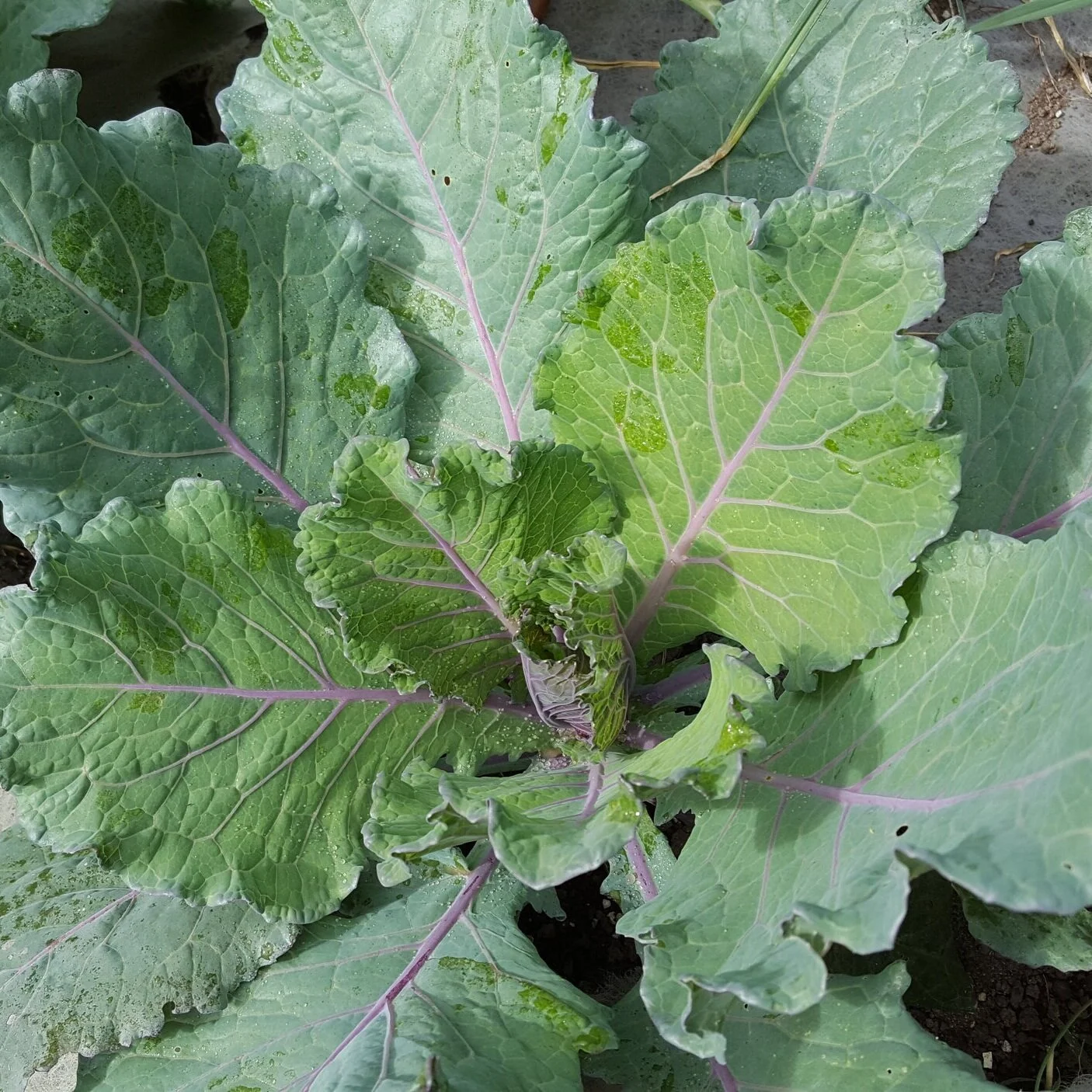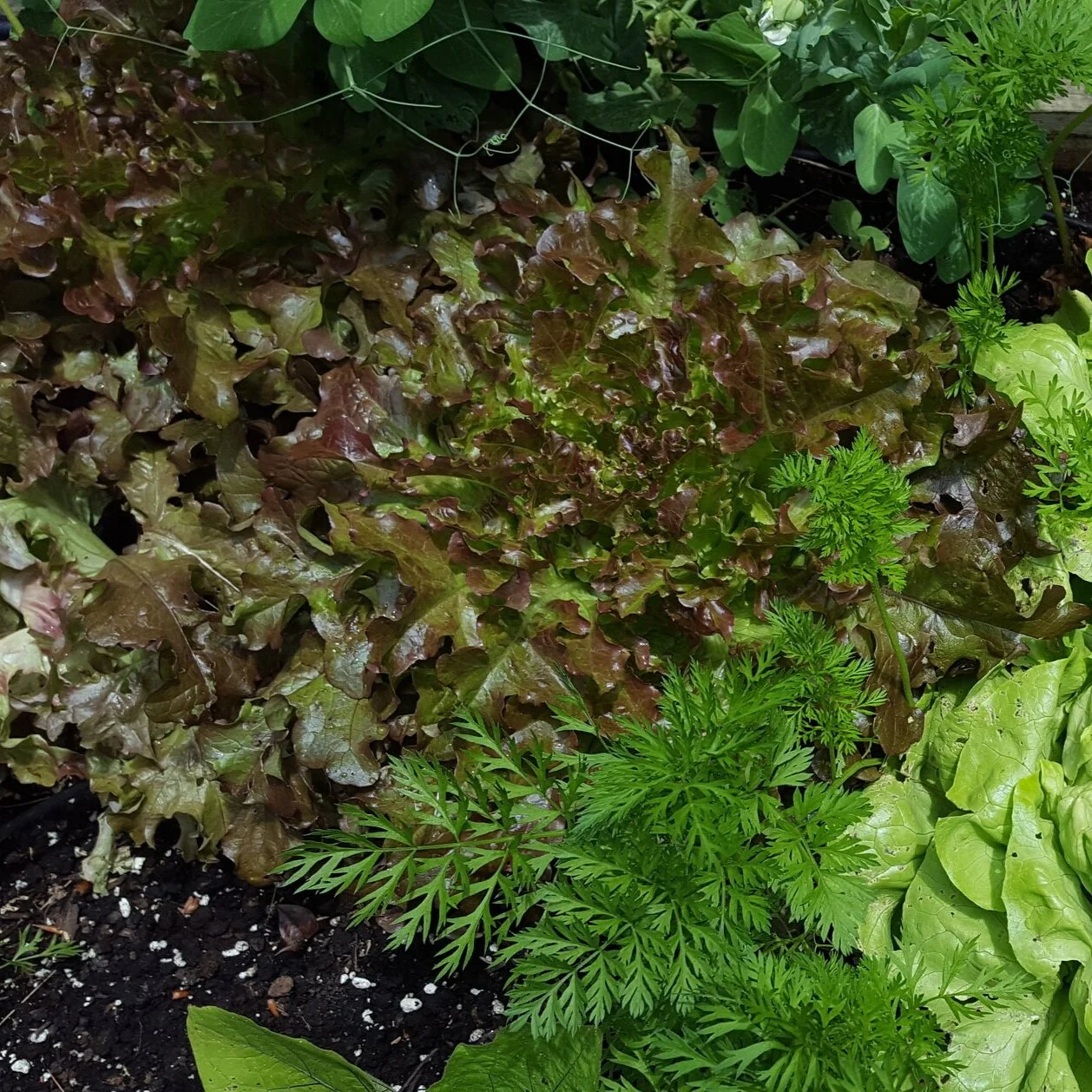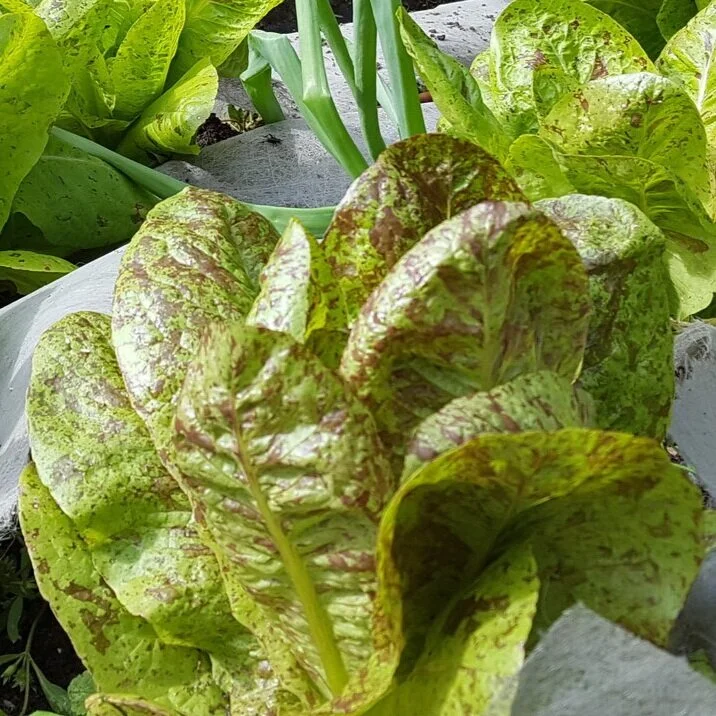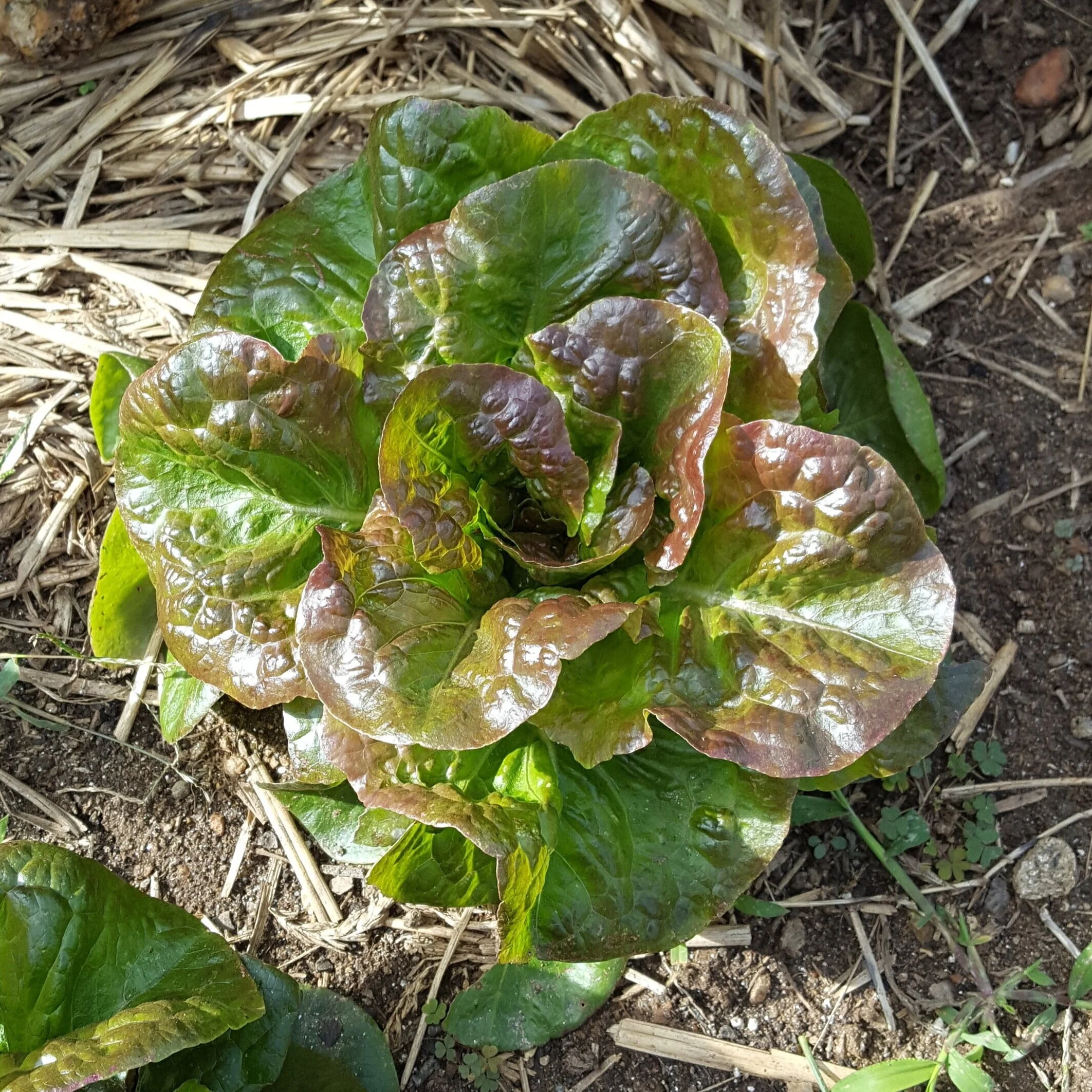Purple Red Burgundy bush beans
Dragon Tongue bush beans
Our Varieties:
There are SO many varieties of beans but they can all fall under the categories of pole beans or bush beans. Pole beans climb and need a trellis of some sort for support. Bush beans have a more compact growth habit and will grow to about a foot tall.
Beans may come in all sorts of colors - green, yellow, white, purple, and striped pods are all common.
Harvest:
Most beans are ready to pick between 4 and 6 inches. Some varieties will grow much longer.
Harvest while bean pods are still tender and not tough.
Harvest often to encourage more production.
End of the harvest:
Bean plants will produce fruit all Summer. They will begin to slow in production and become more susceptible to disease when the temperature begins to cool. Beans will not withstand frost, but we usually remove the plants well before then. Beans left on the plant too long will get tough, woody, and bitter.
Storage and handling:
Beans will last in the fridge for up to two weeks. Store in a basket, bag, or tupperware with a paper towel or cloth square to remove moisture.
Recipe ideas:
Beans are versatile! Steam, blanche, bake, or stir fry and pair with parmesan, thyme, and a squeeze of lemon or garlic, ginger, and a splash of soy sauce.
Find some inspiration here














































